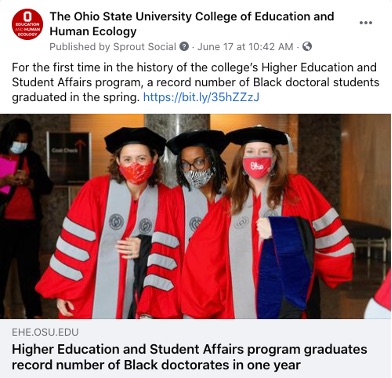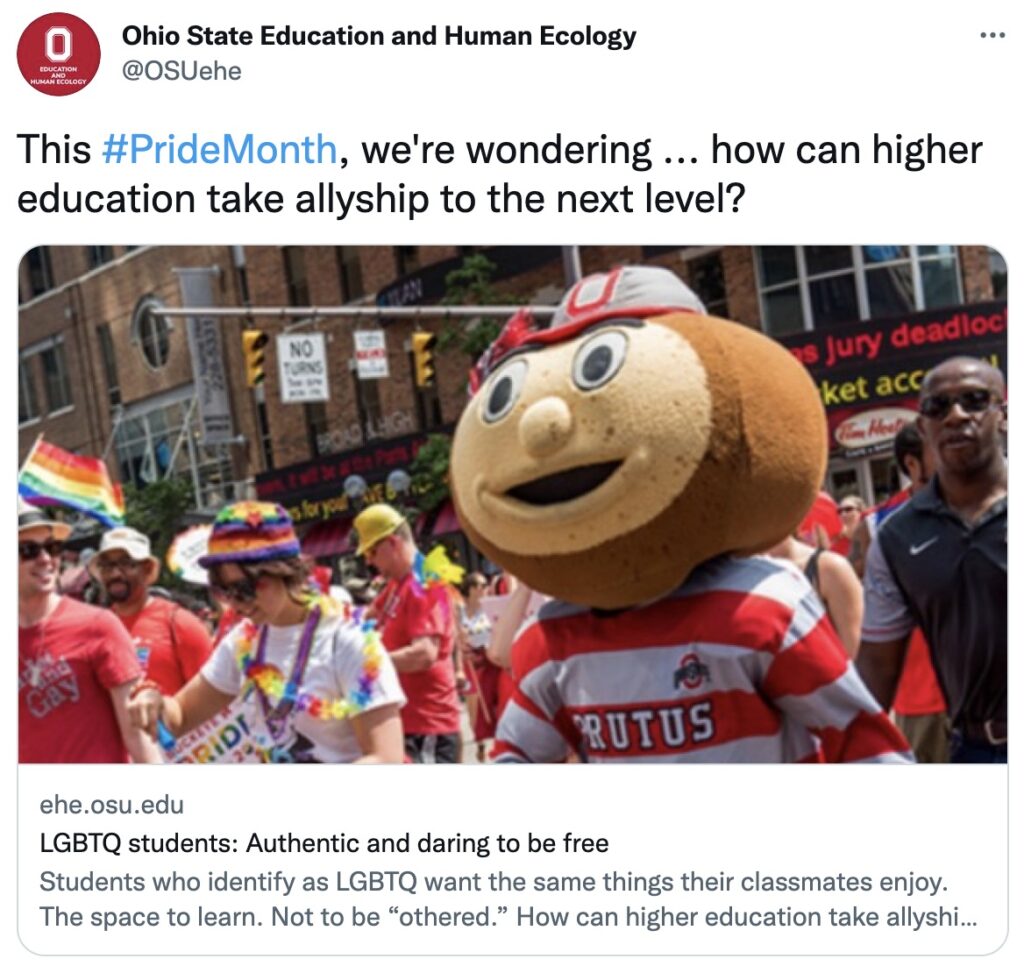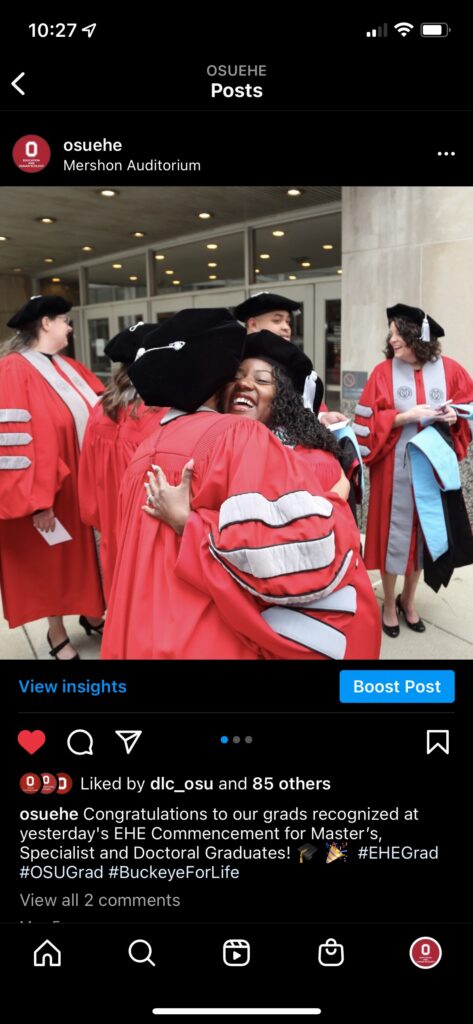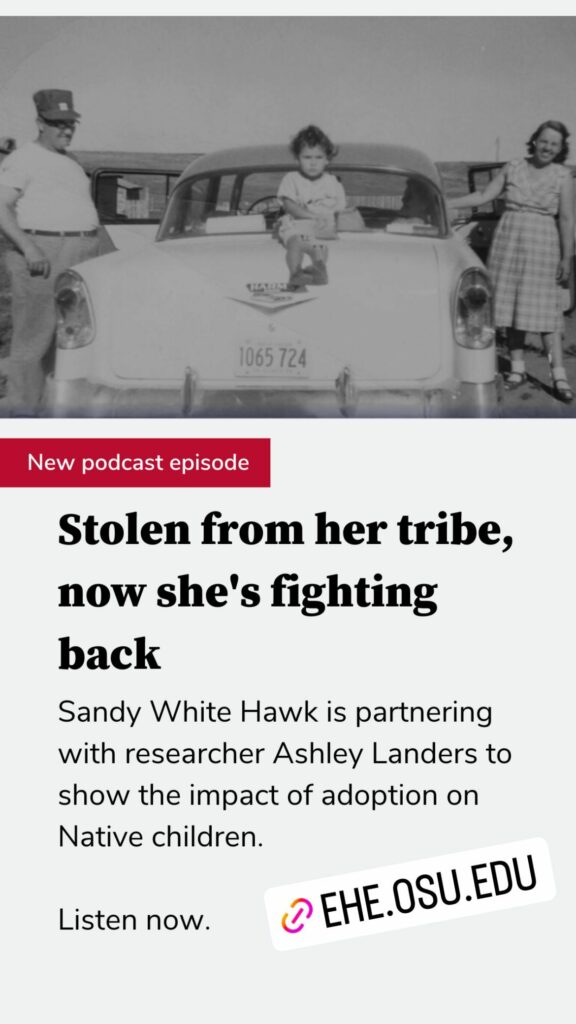
Social media are places for us to deepen our connections with our audiences. Each platform can play a different role in raising awareness and it is important to know where to be and to use these tools to the greatest advantage.
For social media posts, new channels or campaigns, submit a ticket below.
University Policy for Institutional Social Media Accounts
The purpose of the policy is to provide guidance regarding the creation and management of institutional social media accounts for university marketing or communications purposes. The primary objective is to maintain security and integrity of accounts while maintaining access across all platforms for the remaining collaborators. Additionally, social media accounts representing The Ohio State University are expected to maintain a minimum set of requirements to ensure a shared quality standard. The policy also requires that those seeking to open new accounts complete an application for approval by the college and the university.
Social Media Accessibility Guidelines
Social media accessibility is the practice of ensuring that every piece of content we publish on social media is accessible and consumable for our entire community. All content should be accessible by all users. Stay up to date on best practices/trends related to digital accessibility.
Social Media Community of Practice
From established strategists to those interested in creating or expanding the social presence of their colleges and departments, our bi-monthly Social Media Community meetings provide opportunities to learn from the efforts and experiences of your colleagues while sharing your ideas and insights. Meetings include updates on social trends, policies and best practices, as well as case studies and examples from our social practitioners.
Overall minimum requirements for approved social media presence:
- Before applying:
- Have manager approval
- Have a consultation meeting with the college’s social media lead
- To be approved:
- Read the University Policy for Institutional Social Media Accounts in its entirety
- Fill out the university’s required social media application
- Have a long-term strategy/goals outlined for the page or channel
- Include why the proposed content could not be shared on an existing department or college page or channel
- Have at least two page/channel admins with social media management experience
- Must have profile pictures and cover photos approved by the college Marketing and Communications team
- Agree to participate in the university’s yearly social media audit facilitated by the college’s social media lead
- Agree to participate, to the best of your ability, in the university Social Media Community of Practice to stay up-to-date on best practices and university campaigns and guidelines
- Social media platforms:
- YouTube only approved in very special circumstances. Access to the college channel can be provided after a consultation/training with the social media lead.
- For LinkedIn, Snapchat or TikTok accounts, please contact Sonya Afanasyeva to schedule a consultation.
Best Practices
Facebook best practices:
- Post 3-5 times per week
- Monitor at least three times per day
- Hide or shorten URLs
- Keep captions to one or two sentences and follow the university’s editorial style
- Only use hashtags when appropriate (no hashtag flooding)
- Tag links to university websites with UTM codes
- Only use photos and images owned by the university or from a recommended stock photo site.
- Do not post images with text unless it is very minimal (one-three words). Any text in an image must be repeated in the caption.
- Videos must be captioned

Twitter best practices:
- Publish tweets 5-15 times per week
- Monitor at least three times a day
- Only use hashtags when appropriate (no hashtag flooding).
- Tag links to university websites with UTM codes.
- Only use photos and images owned by the university or from a recommended stock photo site.
- Do not post images with text unless it is very minimal (one-three words). Any text in an image must be repeated in the caption.
- Follow the university’s editorial style.
- Videos must be captioned
- Video maximum resolution: 1920 x 1200 (and 1200 x 1900) Aspect ratios: 1:2.39 – 2.39:1 range (inclusive)
- Video length maximum 140 seconds


Instagram best practices:
- Publish on the feed at least once a week and no more than once a day
- Utilize stories for time-bound content and the feed for more evergreen content
- Only use hashtags when appropriate. This means for official holidays or for specific campaigns. Avoid general hashtags like #education or #highered. Use no more than three hashtags in a post
- Keep captions to one or two sentences and follow the university’s editorial style
- Do not put URLs in the caption, only in the bio. Utilize link sticker in stories. Tag links to university websites with UTM codes
- Only use photos owned by the university. Do not use stock photos. Only use high-quality photos
- Do not post images with text unless it is very minimal (one-three words). Any text in an image must be repeated in the caption
- Videos must be captioned
- You can upload a video with an aspect ratio between 1.91:1 and 9:16
- Videos should have a minimum frame rate of 30 FPS (frames per second) and minimum resolution of 720 pixels
- The maximum file size for videos that are 10 minutes or less is 650MB. The maximum file size for videos up to 60 minutes is 3.6GB


YouTube best practices:
- Utilize playlists for series content
- Appropriately title videos and fill out the description box using the university’s editorial style.
- All videos must be captioned (auto captions must be edited if used).
- Any video graphics or elements must be university style and owned by the university.
- Any footage must be owned by the university
- Any music must be approved stock or owned by the university
More questions? Contact our team.
